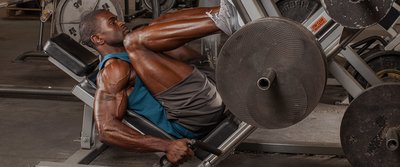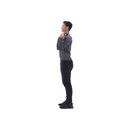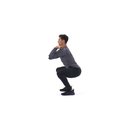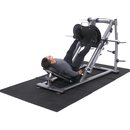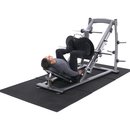Leg day is a unique animal. You know you've done it right if you have to order a wheelchair just to get out of the gym, and you'll probably be sore for days if you really pushed your quads and hamstrings to the max.
But what if one weekly lower-body torture session isn't enough? What if you demand even more growth from your quads, hamstrings, and even your glutes? Well, then, it's time to double the fun and split your leg workout into two distinct sessions!
Double the Gains
Taking a dual approach to leg day—working the quads a little harder one workout, the glutes and hams harder the next— may not actually be any more fun, but at least you can focus on weak areas, add some variety into a routine that may have gone stale, and provide much-needed relief from the mental monotony that accompanies doing the same routine for too long.
If you want to stick with your current split, consider alternating these workouts on your regularly scheduled leg day. Or if you really want to kick some tail and focus on bringing up your lower body, do both workouts over the course of your weekly training split. In that case, you'll want to separate the workouts by at least two days so that you're building in ample recovery time.
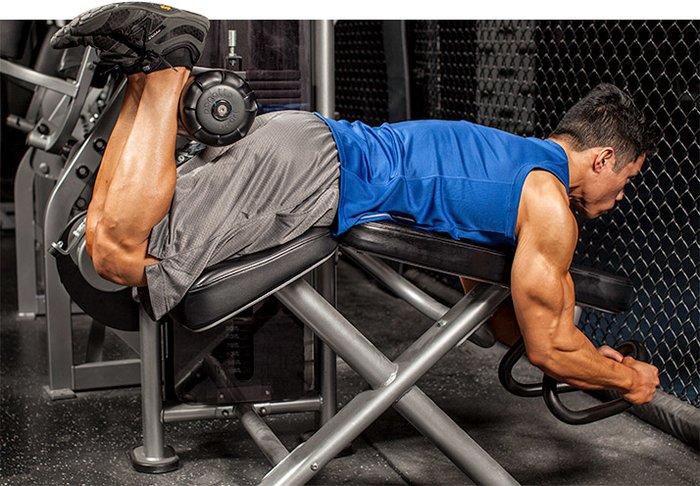
If you really want to kick some tail and focus on bringing up your lower body, do both workouts over the course of your weekly training split.
Legs for Days
Follow this program for 6-8 weeks, alternating the two workouts—or trying them both on for size each week—before making any other significant changes to your training.
Note: These workouts don't include warm-up sets, so do as many as you need, but never take warm-ups to muscle failure. On working sets, choose a weight that allows you to reach the target rep with good form.

BodyFit
$6.99/month- 2,500+ expert-created single workouts
- 3,500+ how-to exercise videos
- Detailed workout instruction
- Step-by-step workout tips
- Training at gym or at home
- Access to Workout Plans
- Access to Bodyfit App
- Store Discounts
Already have a Bodybuilding.com account with BodyFit? Sign In

What comes with BodyFit?

- Instructional Videos
Don't risk doing a workout improperly! Avoid injury and keep your form in check with in-depth instructional videos.

- How-to Images
View our enormous library of workout photos and see exactly how each exercise should be done before you give it a shot.

- Step-by-Step Instructions
Quickly read through our step-by-step directions to ensure you're doing each workout correctly the first time, every time.

BodyFit
$6.99/month- 2,500+ expert-created single workouts
- 3,500+ how-to exercise videos
- Detailed workout instruction
- Step-by-step workout tips
- Training at gym or at home
- Access to Workout Plans
- Access to Bodyfit App
- Store Discounts
Already have a Bodybuilding.com account with BodyFit? Sign In

What comes with BodyFit?

- Instructional Videos
Don't risk doing a workout improperly! Avoid injury and keep your form in check with in-depth instructional videos.

- How-to Images
View our enormous library of workout photos and see exactly how each exercise should be done before you give it a shot.

- Step-by-Step Instructions
Quickly read through our step-by-step directions to ensure you're doing each workout correctly the first time, every time.
Fine-Tuning Your Workouts
Nearly all leg exercises are classified as multijoint moves because they typically work across the knees and hips. Exercises like squats, hack squats, leg presses, and lunges hit the largest muscle groups of the lower body—the quadriceps, glutes, hamstrings, and even the calves to some degree.
But not every exercise hits your thighs and glutes in the same manner, and adjusting your foot or body position can allow you to focus on a weak area, such as the inner or outer portions of the lower quads. Many of these adjustments allow you to either emphasize the quads or the glutes and hamstrings.
1. Stance/Foot Position
Every multijoint leg movement involves some degree of bending at the hips and knees. One significant way these movements differ is the degree to which your knees travel over your toes. When your feet are placed low on the platform, leg presses and hack squats allow your knees to travel over your toes to a greater degree than when your feet are placed high.
This small tweak puts more emphasis on the quads. So, with your feet low on the leg-press or hack-squat platform, you preferentially work your quads over your glutes and hams. The same goes for Smith-machine squats when your feet are directly under your body versus positioned in front.
Want to focus more on your hams and glutes? Put your feet higher on the leg-press and hack-squat platforms!
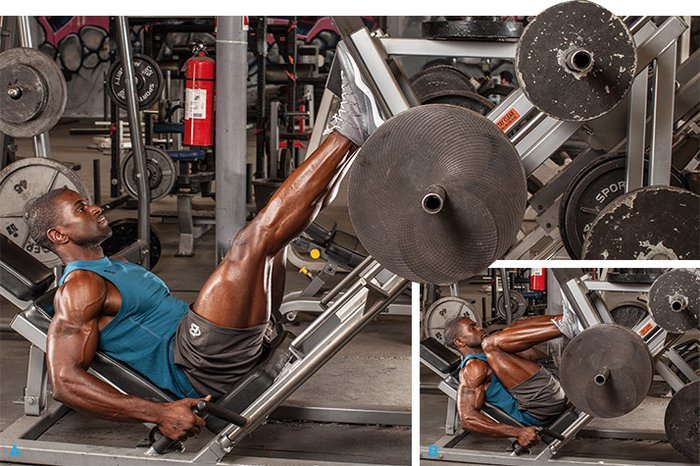
Every multijoint leg movement involves some degree of bending at the hips and knees.
2. Depth of Squat
Chances are you've seen a guy at the gym who puts a ton of wheels on the leg press to impress people, but he only allows the carriage to descend just an inch or two. Doing partial reps like this clearly shortchanges results, but that doesn't mean partials are completely ineffective, especially when combined with full-range reps.
But doing partials solely, as these chicken-legged imposters do, is especially counterproductive if you're trying to build up your glutes and hamstrings. Those muscle groups actually work harder the deeper you go. Consequently, if you don't bring your thighs to a point in which they're parallel with the floor when squatting, they don't get as much activation. Shallow depth-of-squat moves more predominantly target the quads, which are more active over the top half of the move.
By selectively doing partial range-of-motion squats with heavy weight in conjunction with full-range moves, you can build up bigger, thicker frontal thighs than just doing full-range or partial reps alone. That's because with heavy partials you limit your training to a range of motion over which you're particularly strong, one well above the sticking point so you can really overload the weight.
In the partial-rep hack squats in these workouts, you perform sets of just 6 reps so you can really pile on more weight than what you normally use for full-range reps.
3. Exercise Selection
Some moves are simply better than others when focusing on a particular body part. The front squat and hack squat are considered better quad builders, even though with the latter repositioning your feet higher on the foot plate allows you to shift some of the emphasis to other areas of the lower body. And the inclusion of single-joint exercises like the leg extension and the lying leg curl also allow you to better isolate a particular muscle group. You typically do these single-joint moves last in your workout.
4. Turning Your Foot/Leg
On a single-joint move like the leg extension, turning your feet inward more strongly activates the muscle fibers of the outer quad, allowing you to better focus on, but not totally isolate, the outer quad sweep. You can also turn your feet outward to focus on the teardrop (inner quad) just above the knees more directly.
Similarly, on the lying leg curl, you can turn your feet slightly inward or outward to shift some of the muscular emphasis to the inner or outer portions of the hamstrings.
Rubber to the Road
Make these small adjustments to get the most from each and every training session. You'll still have to learn to love leg-day pain more than once a week, but when you look in the mirror in 6-8 weeks total, I guarantee you'll love the results!


